#runed servitor
Text

Runed Servitor (Rise of the Eldrazi) - Mike Bierek
9 notes
·
View notes
Text

I made a lil servitor based off Elly :3 I'll prolly put up a how to for her eventually, but for now I just wanna show her off lol
#pop culture magic#pop culture witchcraft#puella magi madoka magica#servitor#thoughtforms#took me like a week to make her#mostly because runes are hard to draw and there were a lot on her box
5 notes
·
View notes
Text
The Ultimate Grimoire Guide
So! I have been seeing a ton of grimoire ideas and thought I’d stuff them all together. A lot of ideas are from @manifestationsofasort, @banebite, and @pigeonflavouredcake. Check them out! They have a ton of cool stuff there.
What Do I Use For My Grimoire?
You can use anything for a grimoire! For a physical one, journals, binders, and notebooks are good. For digital ones, Notion, Tumblr, Docs, and even just your file folder are great.
Introduction
A Book Blessing
Table of Contents
About Me
Your Current Path
Your Personal Beliefs
Your Spiritual Journey
Superstitions
Past lives
Favorite Herbs/Crystals/Animals/Etc.
Natal Chart
Craft Name
How You Entered The Craft
Astrology Signs
Birthday Correspondences (birth tarot card, birth stone, etc.)
Goals
Safety
Fire Safety
What Not to Burn
Toxic Plants & Oils (to humans, plants, animals)
Crystals That Shouldn’t Be Put… (in sun, in water, etc.)
Things That Shouldn’t Be In Nature (glass, salt, etc.)
Potion Safety
How to Incorporate Blood in Spells
Smoke Safety
Wound Care
Biohazards
Core Concepts
Intention & How It Works
Directing Energy
Protection
Banishing
Cleansing
Binding
Charging
Shielding
Grounding
Centering
Visualization
Consecration/Blessing
Warding
Enchanting
Manifestation
Meditation
What Makes A Spell Work
Basic Spell Structure
What Not To Do In Spells
Disposing Spell Ingredients
Revitalizing Long Term Spells
How To Cast Spells
What To Put In Spells
Spell Mediums (jars, spoken, candle, sigils)
Spell Timing
Potion Bases
Differentiating Between Magick and Mundane
Common Terms
Common Symbols
Intuition
Elements
Basic Alchemy and Symbols
Ways To Break Spells
Laws and Philosophies
Correspondences
Herbs & Spices
Crystals & Rocks
Colors
Liquids & Drinks
Metals
Numbers
Tarot Cards
Elements
Trees & Woods
Flowers
Days
Months
Seasons
Moon Phases
Zodiacs
Planets
Incense
Teas
Essential Oils
Directions
Animals
Symbology
Bone Correspondences
Different Types of Water
Common Plants
Entities
Deities You Worship
Pantheons
Pantheons & Deities Closed to You
Common Offerings
Epithets
Mythos
Family
Worship vs Work
Prayers & Prayer Template
Altars
Deity Comms
Devotional Acts
Angels
Demons
Ancestors
Spirit Guides
Fae
Familiars
House, Animal, Plant, Etc. Spirits
Folklore Entities
Spirit Etiquette
Graveyard Etiquette
Boundaries
Communication Guide & Etiquette
Spirit Work Safety Guide
How Entities Appear To You
Circle Casting
Common Offerings
Altars
Servitors
Mythological Creatures (dragons, gorgons, etc.)
Utility Pages
Gazing Pages
Sigil Charging Station
Altar Pages
Intent Pages
Getaway Pages
Vision Boards
Dream Pages
Binding Page
Pendulum Board
Crystal Grid
Throwing Bones Page
Divination Pages
Mirror Gazing Page
Invocation Pages
Affirmation/Manifestation Pages
Spirit Board Page
Other Practices
Practices That Are Closed to You (Voodoo, Hoodoo, Santeria, Brujeria, Shamanism, Native Practices)
Wicca and Wiccan Paths
Satanism, Both Theistic and Non-Theistic
Deity Work
Religious Paths (Hellenism, Christianity, Kemeticism, etc.)
Animism
Types of Magic/Spells
Pop Culture Paganism/Magic
Tech Magic
Chaos Magic
Green Magic
Lunar Magic
Solar Magic
Sea Magic
Kitchen Magic
Ceremonial Magic
Hedge Magic
Death Magic
Gray Magic
Eclectic Magic
Elemental Magic
Fae Magic
Spirit Magic
Candle Magic
Crystal Magic
Herbalism
Glamours
Hexes
Jinxes
Curses
Weather Magic
Astral Magic
Shadow Work
Energy Work
Sigils
Art Magic
Knot Magic
Music Magic
Blood Magic
Bath Magic
Affirmations
Divination
Tarot Cards
Oracle Cards
Playing Cards
Card Spreads
Pendulum
Numerology
Scrying
Palmistry
Tasseography
Runes
Shufflemancy
Dice
Bibliomancy
Carromancy
Pyromancy
Psychic Abilities
Astrology
Auras
Lenormand
Sacred Geometry
Angel Numbers
Ornithomancy
Aeromancy
Aleuromancy
Axinomancy
Belomancy
Hydromancy
Lecanomancy
Necromancy
Oneiromancy
Onomancy
Oomancy
Phyllomancy
Psephomancy
Rhabdomancy
Xylomancy
Tools
Crystal grid
Candle grid
Charms
Talismans
Amulets
Taglocks
Wand
Broom
Athame
Boline
Cingulum
Stang
Bells
Drums
Staffs
Chalices
Cauldrons
Witches Ladder
Poppets
Holidays
Yule
Imbolc
Ostara
Beltane
Litha
Lammas
Mabon
Samhain
Esbats
Deity Specific Holidays
Religious Holidays (Christmas, Easter, Dionysia, etc.)
Celestial Events
Altars
Basics of Altars
Travel Altars
Deity Altars
Spirit Altars
Familiar Altars
Ancestor Altars
Self Altars
Working Altars
Self-Care
Burnout Prevention
Aromatherapy
Stress Management
Coping Mechanisms
Theories & History
Witchcraft history
Paganism
New Age Spirituality
Cultural Appropriation
Thelema
Conspiracy Theories
Cults
Satanic Panic
KJV
Witches in History
Cats in History
Transphobia in Witchcraft Circles
Queerness in Witchcraft Circles
Other
Recipes
How to Get Herbs
Foraging
Drying Herbs and Flowers
Chakras
Reiki
Witches Alphabet
Runic Alphabet
Guide to Gardening
Your Witch Tips
Resources
Other Tips
List of Spells
Cryptids and Their Lore
What is a Liminal Space?
#witch#witchblr#baby witch#witchcraft#witches#kitchen witch#witchcore#witch aesthetic#witchery#witches of tumblr#spoonie witch#beginner witch#witch community#moon witch#green witch#pagan witch#witchy#grimoire#bos#book of shadows#grimoire ideas#book of shadows ideas#bos ideas
5K notes
·
View notes
Note
I'm going to be honest I forgor there were tech priest types other than dominus and manipulus. Are there others besides enginseer and reductor?
SO MANY
so, enginseers are your basic mechanical techpriest, you may hire an enginseer aboard your ship or on your platoon to help with mechanical rituals and repairs and such
there's also electro-priests, specifically worshipping the "motive force" aspect of the Machine God.
there's three aspects to it, the Machine God as the culmination of all knowledge, of every spirit, of every machine, the Omnissiah, the human representation of the Machine God (usually identified as the God-Emperor of Mankind) and the Motive Force.
the Motive Force is the manifestation of all energy, and Electro-Priests worship it via electricity. there's two sections and they fight a lot
tangentially related are Rune-Priests, who create the circuitry of the mechanicum, the golden runes through which electricity flows
there's also Genators, who are really important since they work in the fleshy side of the Mechanicus, the cloning machinery that create many of the meat for servitors. they also occasionally work in augmentation, and are really friendly with Magi Biologis
there's a bunch others, Artisans, Data-Hoarders, Techno-Archaeologists, but onto the Magi. . .
a Magos isn't really a defined role as much as it's a rank. a Magos is a senior, specialized tech-priest that has dedicated themself and their augmentations to a single, specified duty.
Magi Dominus command the Skitarii and Battle-Automata, Magi Reductor destroy things themselves, Magi Biologis study alien flora and fauna, Magi Explorator search for new STCs, it's a whole thing
49 notes
·
View notes
Text
Hi, guys! I just began this online grimoire, and I figured I'd make my first post.

Let's talk about Servitors.
What is a "Servitor"? A Servitor, in terms of spell work/witchcraft is a servant that was created by you. Think of it as similar to a computer program, or as a type of spirit. It's apart of you, as it's created by your mind. It's your intentions, your needs that it's serving. You're the one that brought it to life, and you're the one that keeps it alive. It relies on your energy to thrive, and function at it's fullest capabilities. Their sole purpose is to fulfill the goal that you give it, whatever it may be. I, personally, use mine for protection and revenge. You may also create them with the goal of bringing you good luck, or to bring you good health. If there's something you want attracted to your life, there's a Servitor you can make.

How would you create a Servitor?
I would like to stress, you are binding yourself to a spirit you created. This includes a contract, that you will need to be as specific as possible in. If there's something too broad for interpretation, there's an opportunity for a misunderstanding. You will also be creating and charging a sigil for this entity. I will be giving the basics, as well as adding parts that I've found helped with the creation. I will make sure to note that they are my add-ons.
What you need:
• Item of choice
• Lined paper(s)/pen or pencil - especially ones of the color that matches the intent.
• Four white candles
• Optional: Crystals, herbs, or anything you would like to use for a boost.
Before you begin anything, you need to find an item you want to use as a sort of "home" for this creation. It needs something to latch onto. As long as it's something you interact with frequently, it can be something you take everywhere, or keep at home. This can mean crystals, jewelery, I like to use stuffed animals since I cuddle them, toys if you would like to protect your children, etc. You must have it be something you frequently interact with, otherwise it will not stay "alive".
Once you have the item, and it's goal in mind, take some time, get creative and find a name for the entity. Once you have, drink a tea of choice, listen to appropriate music, this is the time to be creative and to develop the entity and contract. Take time to imagine how the entire will appear, what it's energy will feel like. Picture it standing beside you as you begin to write the contract. Be as specific as you can, include it's goals, the expectations, and rules. Describe it's appearance, and energy in the contract. Include how you plan to feed it, and keep it "alive". They need to be fed energy of sorts, or else they will "die". Include any details you feel necessary, don't leave anything out. Include a phrase to bring it's attention. At the very end, remember to include a killswitch phrase. This is only to be used when you no longer want the entity "alive" anymore. This happens if things as simple as it has completed the goal, or as complicated as something went wrong/it backfired has happened.
Optional: You may also provide the Servitor a rune, a planet, or any moon cycle correspondents that helps provide them with a boost of energy.
You will need to now create a sigil based on the name of the entity. If you need help with creating a sigil, I will happily provide sources! I like to place their sigil on the contract, and I also like to find a way to attach the sigil to the item. I also burn their sigil as I do the ritual, along with having a seperate paper with their sigil written on it for documentation. This is my way to keep a form of their presence attached to necessary parts. As I mentioned, I use stuffed animals, so I would support going as far as making two copies of the contract and sigil. One for keepsake, and sew the other inside of the item, if possible.
Once you have completed those steps, cleanse your workspace. You may do this however you wish, that process varies from everyone. Next, take the four white candles you have. Place one in each direction (North, East, South, West) as far apart as necessary. Place the item you're attaching it to, in the middle of the candles. Light them clockwise, as you set the mood/intention. Sit down next to the candles, and relax. Close your eyes, meditate as you imagine what the Servitor looks like. Focus on it, until you can feel it's presence surrounding you. I often attempt to touch the Servitor in the image. Once you've made that connection, slowly open your eyes and calmly state it's name. Begin reading off the contract out loud, as clearly as you can. Once you have finished, sign off and take in it's energy around you.
Put out the candles however you wish, put your items away, and place the Servitor where you wish!

If you ever feel like the Servitor has grown too weak, you may repeat this process, but use the already created contract and entity in mind. Think of it as a regroup.
I hope this has captured the attention of any curious person. Anyone needing to know if you can do this as a beginner: If you feel comfortable doing so, then go for it. Any questions and concerns are welcomed! Give me opinions on my first post!
#witch#witchcraft#servitor#entities#servent#magick#spellwork#contract#pagans of tumblr#hellenic pagan#spellcaster#ritual#witches#baneful magic#protection#powerful spells#poppets#poppet#servitors#spiritualism#spiritualawareness#spiritual knowledge#spirituality#spiritualconnection#ritualistic#ritualism#tumblr witch community#warding#grimoire#grimoires
197 notes
·
View notes
Text

Runed Servitor
Scholars had puzzled for centuries over the ruins at Tal Terig. Its secrets had always lived within one rune-carved head.
Artwork by Mike Bierek
3 notes
·
View notes
Text
Sacrifices
Tap tap tap went the mind shackle as Gal-8Θ worked. It sat just at the edge of her consciousness, observing her thoughts with the dispassionate air of an adept watching a servitor drive rivets. If it sensed anything amiss, any proscribed idea or prohibited emotion, it would report them off to Phyreht and correct the mistake. Painfully.
Not that it would find one. Gal-8Θ had tricked the simpleminded construct into monitoring a bland simulacrum of her surface thoughts running on her cranial augmentics more than a week ago. A sacrifice of cognitive power for sure, but one she was willing to make. The rest of her xenos jailor’s constructs might notice if she attempted an escape but she had freedom within her quarters and mind.
That relative peace came to an end when the herald construct phased through the wall. It hovered intangible and out of sync with reality like a wraith for a moment before it solidified, reared up on its tail like some great serpent, and let out a series of piercing hoots and shrieks. The construct froze, its glittering eye clusters fixated on the tech-priest. Phyreht was coming. Gal-8Θ stopped her work and hurried to prepare for her master’s arrival.
-----
The necron swept into the laboratory on the tooth-aching hum of antigravity ill-tuned for human comfort, stalking past crystal vats of meat and stolen data vaults until it loomed over the tech-priest, its single unblinking eye boring into her. Gal-8Θ was tall- Aprec Secundus's low gravity produced lanky stock- but Phyreht the Voidsmith still dwarfed her by three heads, the nightmare in metal made only taller by the esoteric energies that bore it aloft. She stood, repressing her meatbrain’s desperate urge to curl into a corner and ignoring the mind shackle’s desperate tapping as it realized it had been tricked.
“[You are hiding things from me again. Explain yourself.]” The necron spoke in the rhythmic datachants that passed for its language, translated a moment later into poorly encrypted binharic by its construct. Gal-8Θ did not know if it knew that she had begun to learn its language months ago, or if it even cared.
[I am growing bored of acting as your farmer.] Gal-8Θ canted back. She nodded to the vast array of cloning vats behind them. Her stump ached from where Phyreht had cut away her hand for tampering with the first mind shackle. A necessary sacrifice to understand how the things worked. [Your constructs could easily run this laboratory. It does not challenge me.]
“[It is the task I took you for.]” The cryptek replied. It summoned its staff and leaned down to look into the tech-priest’s face. “[It is the task you will complete, or you will be terminated.]”
[The task you enslaved me for was finding a way to treat your illness. I am not treating it making food for you to attempt to eat.] She appended additional disapproval runes to the word. [I am simply enabling its symptoms.]
Phyreht’s eye shifted from a cool green to a tepid, cloudy yellow. The impossibly long fingers of its hand reached for her and the bladed head of its staff sang with otherworldly power. “[If you will not serve-]”
[I will serve!] Gal-8Θ said. She stepped out of the way to reveal the single cloning vat she’d dragged to her personal work area. In it hung an organ, dull and silver and studded with crudely grafted augmentics. She switched from binharic to a halting rendition of the xeno’s own language. “I can serve you better!”
The necron froze and stared, transfixed, at the meat. Its eye pulsed white yellow white. “[What is it? New food?]”
[It is a stomach- an organ that will allow you to draw some energy from matter, similar to organic digestion.] Gal-8Θ explained. She dismissed a memory-djinn attempting to call up associated experiences. She had no wish to relive the time the xenos had invited her to ‘dinner’. The charnel stench of burning meat, the juices dripping from Phyreht’s thorax, the manic glint in its ocular. [If installed you could eat and gain sustenance. You would be more whole.]
“[You could do this?]”
[With knowledge. This is a prototype, the first partial success I’ve made in bonding necrodermis to organics. I would make something superior, seamlessly compatible with you. In time I could grow something even greater than that.]
"[Define greater.]" Phyreht’s eye snapped back to green. It dismissed its staff. "[Show me your plans.]"
Gal-8Θ did.
-----
When Phyreht departed the tech-priest’s laboratory, it took the mind-shackle with it. Within an hour the herald construct returned bearing a case of hard light scrolls. Gal-8Θ rattled out a sigh of relief. Whatever hunger ailed the necron carried enough of a stigma that it was beginning to grow desperate, beginning to truly listen to ideas that had previously fallen on deaf ears.
She felt her ribs through her thin robe, well defined from weeks of rationing food and hiding biomass for the cloning vat, and winced when her good hand touched the sore wounds where she had ripped out her own augmetics for parts. Sacrifices she had made to build her gambit. So many sacrifices. Aprec Secundus would forevermore be a distant forge that hated her. Ther-0981 and their squad dead and leaking oil and blood onto the snow as she stepped through bodies to retrieve the datacash for herself. All dear, all painful, all necessary. The quest for knowledge demanded it. She unrolled the scrolls, called her translation-djinn, and began to read.
-----
AN: So a few weeks ago I was musing about writing a short story where a necron kidnaps a tech priest because of flayed one reasons. Turns out, I wrote that story, submitted it to Cold Open Stories' fast fiction contest, and got it published as a runner up! Check out the other published stories below!
#hobby#warhammer#wh40k#warhammer 40k#necrontyr#admech#techpriest#tech priest#adeptus mechanicus#cryptek#flayed ones#writing#scifi#cold open stories#fanfic#tw: body horror#tw: abuse#tw: self harm#tw: cannibalism#well I guess *technically* it isn't cannibalism#but humans are implied to be eaten all the same
4 notes
·
View notes
Text
Shea, you put a chicken egg in your nest. That or Noiz and I are about to roll on the floor laughing in Xorvintaal finale.
MY NAMES HENRY KION?But no like
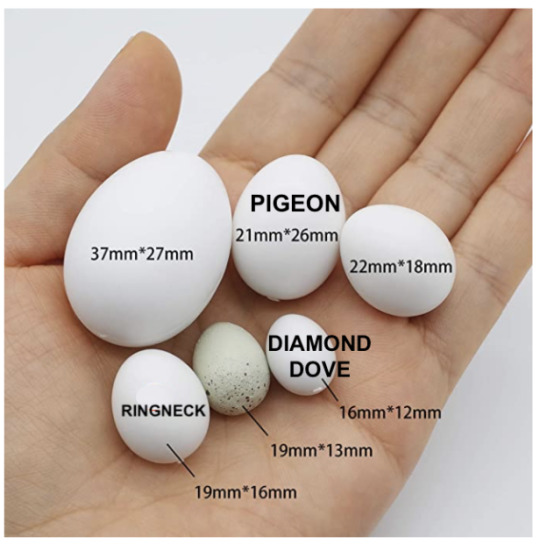

HENRY BUDDY? I KNOW I PUT THE KION BRAIN SERVITOR ON YOU BUT ON GOD WHAT DID YOU GET UP TO WITH NOIZ IF SHE AINT FUCKIN WITH ME
NO PLEASE TELL ME SHE'S FUCKING WITH ME
ME DOING THE KION THING - NO THATS NOT A---THAT'S NOT AN EGG---THAT'S A SPHERE please be fucking with me
My brain's on a loop, like, she's fucking with me, she's testing on if I would ah hah this one. Girl I done told you I'm blind most of the time and this is all servitor based, i don't fuckin know what your pyramidheads be doing to your birds
i need a paternity test


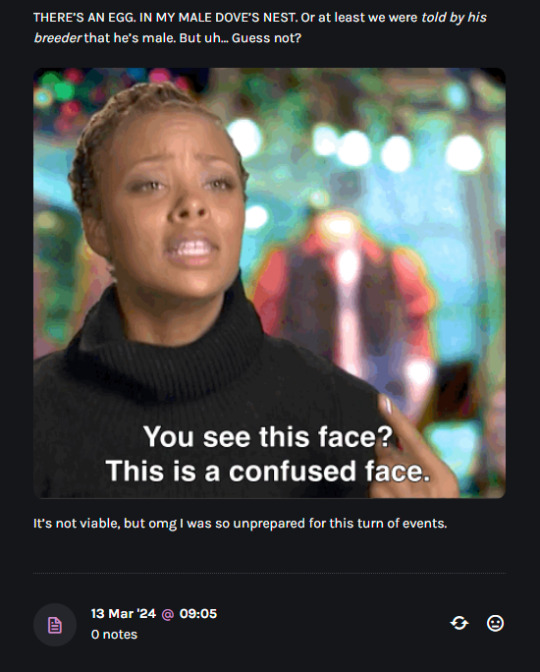

SHE'S FUCKING WITH ME RIGHT???? THIS IS A LEVEL OF GREEK BULLSHIT EVEN I WASNT READY FOR SHE'S FUCKING WITH ME
let me OFF THIS CRAZY TRAIN IF SHE AINT FUCKING WITH ME OH MY GOD

DONT REGENDER THE BIRD NOW IF YOU AREN'T FUCKING WITH US, HE LIKES HENRY JUST FINE, EVEN IF HE IS AFAB OR A LIL INTERSEX OKAY, TAKE THAT AS A MORAL IF YOU AREN'T FUCKING WITH MEohmygod

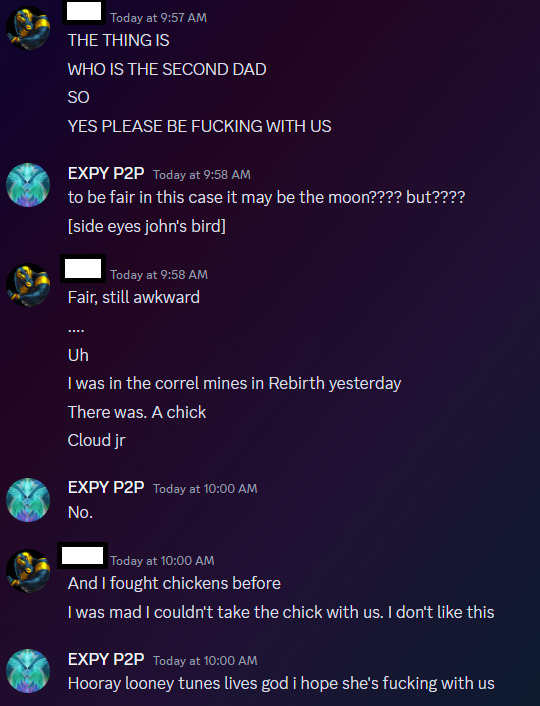
shea say syke

SAY SYKE SHEA!!!!

Because if you aren't messing with me, the triangles were assigned to the people bound into your mess on your end with the binding rune and the spiral, all traffic directs one way really, and that's a really unfriendly message right there.
#MY NAME IS HENRY AND THOSE ARE UH#THOSE ARE MY EGGS I GUESS#LUNA JUST GAVE THEM TO ME CUZ IT BE LIKE THAT#PLZ BE FUCKING WITH ME#what greek bullshit is this!
2 notes
·
View notes
Photo
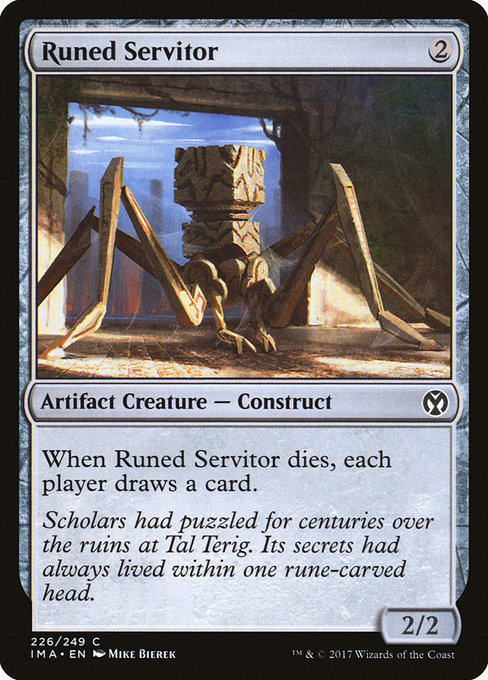
Runed Servitor
Scholars had puzzled for centuries over the ruins at Tal Terig. Its secrets had always lived within one rune-carved head.
Artist: Mike Bierek
TCG Player Link
Scryfall Link
EDHREC Link
#mtg#magic the gathering#tcg#$0.06#mike bierek#runed servitor#iconic masters#artifact#creature#construct
15 notes
·
View notes
Text
Ash Guardians
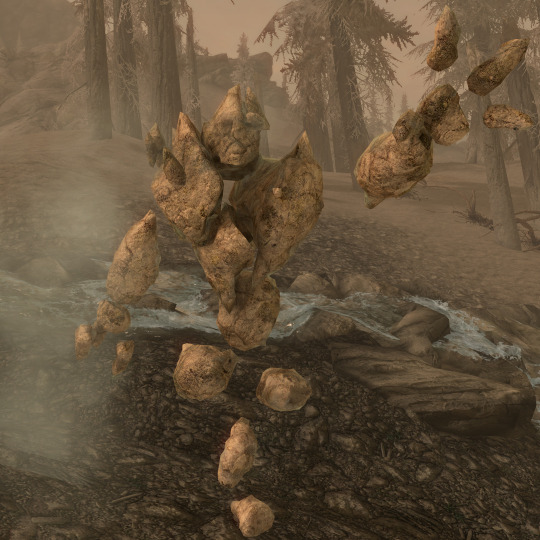
[ID begin: a screenshot of the Ash Guardian model from Skyrim. It's a collection of brown rocks in a vaguely human form that's racing towards the viewer to slap the player character. End ID]
In-Game Lore
Ash Guardians are pseudo-Daedric constructs created by the Telvanni who went to Solstheim to study Ash Spawn. They are controlled by a Heart Stone (also spelled Heartstone) - if they are summoned or created without one, they will attack indiscriminately.
Heart Stones are mined from unusual ore deposits in Solstheim. They can be used not only to control Ash Guardians, but also in enchanting and to prevent necromancy spells from wearing off.
In the Skyrim expansion Dragonborn, you can summon an Ash Guardian by using the spell Conjure Ash Guardian and having a Heart Stone in your inventory for it to consume so it doesn't become hostile. Conjure Ash Guardian is an Expert-level Conjuration spell.
Pop Culture Witchcraft
Wiped user @mothmaam has a spell for summoning an Ash Guardian as a servitor, complete with a crystal to use in place of a Heart Stone. In lore, Ash Guardians seem to lack the intelligence of other Atronachs (such as Fire, Frost, and Storm ones).
Ash Guardians may be related to the Ash Rune spell, which immobilizes whoever sets off the spell. Deleted user @varmafre created an Ash Rune-inspired spell that will stop someone in their tracks or make them forget about whatever it is that they were trying to do.
Because of their strong offensive abilities, Ash Guardians could be useful in aiding you in baneful magic, spells for confidence, protection spells, crystal magic, and even with sigils if you follow the Ash Rune-Ash Guardian connection.
Sources
https://en.uesp.net/wiki/Lore:Bestiary_A#Ash_Guardian
https://en.uesp.net/wiki/Skyrim:Daedra#Ash_Guardian_DB
https://en.uesp.net/wiki/Skyrim:Ash_Guardian
https://en.uesp.net/wiki/Skyrim:Conjure_Ash_Guardian
https://en.uesp.net/wiki/Lore:Heart_Stone
https://en.uesp.net/wiki/Skyrim:Miscellaneous_Items#Heart_Stone
https://the-college-of-whispers.tumblr.com/post/661947710561288192/ash-guardian-servitor-spell
https://en.uesp.net/wiki/Skyrim:Ash_Rune
https://the-college-of-whispers.tumblr.com/post/656345761608597504/magic-runes
https://the-college-of-whispers.tumblr.com/post/661857112447696896/ash-rune
#the elder scrolls#elder scrolls witchcraft#elder scrolls paganism#jasper post#in-game lore#spells#thoughtforms and servitors#ash guardian#ash rune#the daedra#conjuration#conjure ash guardian
5 notes
·
View notes
Text
Jasper's Pop Culture Magic/Paganism Guide For Beginners & Toe-Dippers
When you first get started in pop culture magic (PCM) or paganism (PCP), it can seem overwhelming because of the lack of broad-scope sources and the abundance of options for what to use in your craft. If you're building a PCM-based praxis, you may be wondering what you should do.
First, narrow it down.
Choose the things you deeply love and carry with you, stuff you've loved for a while or can see yourself loving for a long time. Stuff that makes sense as a medium for magic for you.
When I started, I only used Pokemon-based stuff, because I've been unfortunately obsessed with that series since I was little. I eventually branched out into Dungeons and Dragons, the Elder Scrolls, and Magic: the Gathering. There have been plenty of series that I enjoy that I think could be an interesting addition to my magical practice, but I haven't included them.
Second, find what fits.
I don't interact with my four media sources the same way, and this seems to be a pretty common occurrence in PCM/PCP. There are several ways to interact with pop culture in your magical and/or religious practice(s), some of which I asked about in my recent pop culture survey. If you're looking to incorporate PCM into your craft or PCP into your religious practice, consider the following methods (though there are more than just those listed here).
Divination (either outright or inspiration).
Things like cards or runes can be used in divination, especially if they're already used for that in the source.
Other things can be used as inspiration for divination methods, such as tarot decks based on the media in question or using the soundtrack (if applicable) for shufflemancy.
Elemental (or similar) systems.
Some pieces of media have elemental systems, many of which follow elemental systems used in our world. For example:
Avatar: The Last Airbender (and its related spinoffs): air, earth, fire, water (and possibly spirit? I don't keep up with it)
Cardcaptor Sakura: dark, earth, fire, ice, light, snow, thunder, water, wind, wood
Flight Rising: arcane, earth, fire, ice, light, lightning, nature, plague, shadow, water, wind
Iron Widow: earth, fire, metal, water, wood
Other franchises don't have elements, but rather systems that categorize magic in other ways.
Dungeons and Dragons: Magic Schools (abjuration, conjuration, divination, enchantment, evocation, illusion, necromancy, transmutation)
Magic: The Gathering: Colors (White, Blue, Black, Red, Green, and sometimes Colorless)
Pokemon: Types (there are 18 of those damn things, I'm not listing them all here)
The Elder Scrolls: Magic Skills (Alteration, Conjuration, Destruction, Enchanting, Illusion, and Restoration, though Alchemy is a Stealth Skill that's often added)
Figures such as protagonists, in-universe divine figures, or different races (in the case of sci-fi/fantasy).
This can be close to deity work, hero worship, working with archetypes, or spirit work. It can vary and fluctuate. This leans more into the pop culture paganism side, but it's something that's always an option.
Working with different races, such as the Merfolk of MTG, is another option if you don't like working with individuals and rather choose to interact broadly. I don't know much about it, but uhhhh I may be mildly obsessed with the idea and am researching it.
Inspiration for servitors/thoughtforms.
If you have the energy and magical programming know-how, this could be an interesting avenue to explore. It helps with visualization and ideas of what the servitor/thoughtform looks and acts like.
Magical praxes (ideas of how magic works).
This is a lot more vague, but essentially you're taking ideas from the magic system of the media and working with it in our world to help explain how magic works to you.
Spells such as wards or fireballs.
You actually don't have to be a PCM practitioner to make spells based off of pop culture things (not just spells, but things like character traits, Pokemon moves/abilities, and so forth).
This is the most common version of PCM that non-pop magic users dip their toe into or that pop magic users come up with to interact with media that isn't central to their practice/magical praxis.
Symbols, sigils, and languages/scripts.
Many forms of media bless us with various symbols, sigils, languages, and scripts that have different meanings. These are a treasure trove for magical working if you like to write or draw.
You don't have to work with all of these various forms in your craft, and you don't have to do the same thing for all the forms of media. I'll go through my four to illustrate:
Dungeons and Dragons: divination, elemental system, spells, symbols
Magic: The Gathering: elemental system, inspiration for servitors/thoughtforms, spells, symbols
Pokemon: elemental system, inspiration for servitors/thoughtforms, spells
The Elder Scrolls: figures, spells, symbols
Finally, there is so much nuance in PCM/PCP, and most of it has to be discovered firsthand.
I can talk for days about how I built my magical praxis, my magic system, from the ground up. In fact, I'm even writing a book about where it is now. But that topic is boring and won't help anyone who doesn't care about my craft and wants to build one of their own.
Dabbling is always something you can do, though I recommend being wary of just taking something from a real-world culture, religion, or other group just because it appeared in a piece of pop culture media. Not everything is free for the taking. Be respectful.
#jasper post#pop culture#beginner#pop culture magic#pop culture magick#pop culture witchcraft#pop culture witch#pop culture paganism#pop culture pagan
260 notes
·
View notes
Text
100+ Grimoire Prompts/Ideas
Disclaimer
No single witch knows about all these things or has answers to all these prompts. This is just a reference list. Don’t get overwhelmed and focus on what interests you and relates to your path when making a grimoire or book of shadows.
The Essentials:
Does your grimoire have an index for organization? Make one!
Write about the history of witches, the occult, Paganism, ect.
What is witchcraft?
What is intent? What is your will? How do they work?
What types of spells are there?
What are some methods for spells?
What types of witches are there?
What is cleansing? Why is it important? How is it done?
What is charging? Why is it important? How is it done?
What is grounding? Why is it important? How is it done?
What is shielding & warding? Why is it important? How is it done?
What are circles? Why are they important? How is it done?
What is visualization? Why is it important? How is it done?
What methods are there for divination? How can it be used?
What is consecration? How do you consecrate tools?
Write about energy, energy work basics, how is energy used?
What methods of meditation are there? Have any favorites?
Write about any tips for meditation you know of!
Other Useful Stuff:
Make a list of terms commonly used in reference to witchcraft
How to write your own spells
How to make moon water
How to make sigils
How to dress candles
The wheel of the year. What is it? How do you celebrate it?
Make a pendulum board
Write the entire Theban Alphabet
Taglocks. What are they? How do you use them?
The Correspondences of:
The Elements
The directions - North, South, East, & West
Moon phases
Zodiac signs
Planets
Days
Times of day
Numbers
Colors
Tarot cards
Runes
Herbs & Spices
Flowers
Trees/Wood
Other plants
Essential Oils
Incense
Teas
Seashells & other things from the sea
Crystals & Metals
Gods & goddesses
Spirits
Angels
Fae
Entities:
List pantheons/deities
Basic spirit work
How to protect yourself from spirits
How to bind and banish spirits if something goes wrong
Fae etiquette
Types of Fae
List ways to communicate with deities/spirits/Fae
Information on constructs, servitors, tulpas, etc.
Your Path:
Page of tips/reminders
List practices, topics, deities/spirits of interest
How did you discover witchcraft?
What kind of witch are you, if any labels apply besides witch?
Why do you do witchcraft?
What inspires your practice?
Is your practice based on any certain culture, religion, etc?
Is witchcraft spiritual for you? How so? Are you Pagan, Wiccan, etc?
What is special about your practice? Do you have any unique methods, ideas, systems?
How do you believe magic works?
What has being a witch taught you?
Do you have any rules for your path? What are they? Why do you have them?
Write about your goals relating to witchcraft.
Do you have any familiars, deities or spirits you work with? Write about them.
Are there many witches, occultists, Pagans, ect that inspire you? Who? What about them is inspiring?
Make a correspondence page for you. Your natal chart, birth tarot card, numerology, elements or signature ingredients you connect to, etc.
Draw a chart of symbols you use in your practice. This could be alchemical symbols, sigils, runes, etc.
Offering ideas for your deities/spirits
Plants you have and how to care for them
Do you have any witchy drawings or doodles? Add them! Make some!
Write about folklore, especially personally significant or local folklore
Write about any myths or folk tales you like
Write about local animals, plants, in your area
Make lists of:
Witchy recipes, crafts, projects, ect that you wanna do
Tarot spreads you like
Other spreads you like, oracle, runes, ect
A section or separate book for readings/spells/rituals you do
Witchy places you like, that be it woods, cemeteries, shops, ect
A witchy wishlist, tools, ingredients, etc that you want
Witchy books you have and witchy books you want
Random topics:
Astrology
Astral projection
Auras
Crystal grids
Dream interpretation
Familiars
Herbalism
Lenormand
Runes
Sacred geometry
Scrying
Symbols
Tarot cards
Oracle cards
Palmistry
Pendulums
#grimoire prompts#book of shadows prompts#grimoire and bos prompts#grimoire & bos prompts#grimoire ideas#grimoire inspiration#book of shadows inspiration#grimoire inspo#grimoire idea#book of shadows ideas#book of shadows idea#grimoire prompts masterlist#book of shadows masterlist#grimoire masterpost#book of shadows masterpost#witch#witchcraft#witches#witchy#witchy ideas#witch vibes#witchy vibes#witches of tumblr#witch community#magic#occult#magick#grimoire#book of shadows#info
8K notes
·
View notes
Text
Worldbuilding Journal 1: part 4
Golemcrafting of Vandral
(Special thanks to @ayellowbirds and @dzhukhe letting me bounce ideas off of her for this one!)
Jumping to another part of the setting today, I’d like to go over something that I felt like needed to be done for my setting, namely how to include connections to the real-world folklore of golems and work it into the setting.
Let’s face it, as it stands, aside from being animate shapes of sometimes-clay, sometimes other materials, there really isn’t much from Jewish folklore about golems as they appear in Pathfinder, and indeed tabletop gaming as a whole. They usually end up being a standard kind of monster that you can sometimes make, or are conflated with earth elementals, just being magical rock-men that occur somehow due to the magic of the setting. (the latter is especially true in jRPGs).
The truth is, in Jewish folklore, golems can be many different things. They might be a sign of man’s hubris, or an attempt to become closer to the divine by creating. They might be guardians, destroyers, or barely-controllable servants that could turn against their creator the moment they forget the rituals and routines that keep them in line. They might be mindless, or they might be intelligent enough to question their own place in the universe.
In this worldbuilding, I wish to reconcile the question of golems with minds and complicated relationships with their creators with the typical mindless automatons seen in Pathfinder. Feel free to leave feedback on it!
The process of creating golems, a type of automaton apart from all others, originated with the Vandrali people. Deeply faithful, the Vandrali believe that the act of creation, whether it be art or craft or both, to be the surest step to better understand the divine, and to them, the creation of golems, binding otherwise unconscious elemental spirits into physical form, was the greatest expression of this, though still a very expensive process, pursued only by their greatest priests.
The first golems created were made of clay, and were mindless beings, however, eventually a method was discovered to grant the golems full sapience, their elemental spirit cores serving much the same purpose of a soul. While many of these so-called “Enlightened Ones” served primarily with their strength, others grew to find their own value in faith, government, and even the ways of magic.
However, like all things related to Vandrali faith, these new golems were the subject of hot debate. The original golems could have their runes altered in their soft clay bodies, shutting them down until restored for either holy days or when their creator did not have need of them. Was it moral to consign these new sapient golems to even a temporary oblivion? As the process was refined and applied to other materials, the question of whether it was blasphemy to go beyond the traditional clay arose.
The biggest question, however, was the morality of treating fully sapient beings as a servitor race. Some argued that golems should obey their creators as the Vandrali obeyed the gods, while others cited their capacity to choose who they served. Divided into two camps on the matter, the argument almost came to blows before it was interrupted by invasion from the west from the Slave-Kingdoms of Karsha.
Though a fierce defensive campaign mustered by cooperation from both camps, the Vandrali repelled the invasion, though with heavy losses, and the decision was made that those who wished for golems as servants could have them, but they could not have minds of their own. As such, the variation of the process that created sapient golems was limited to those priests who wished to express their connection to their chosen god through the act, and such sapient golems were usually left to their own devices to choose their own fate, though they often chose to remain with and help the Vandrali, most often out of a sort of familial kinship.
With the elevation of creating Enlightened Ones, the original process became considered less sacred, and spread beyond the region, becoming the golem-creating process that most nations of Lagun are familiar with. However, occasionally, a spellcaster either accidentally discover the method to grant a golem or other construct sapience, or seeks it out in Vandral or in esoteric texts.
In terms of rules, I’d like to treat “Vandrali Construct Crafting” as a feat that allows a construct crafting character to craft variant versions of constructs with intelligence scores for a markup in price, though such creations would of course be free-willed.
That does it for today, but tune in tomorrow for the thrilling conclusion of this special!
15 notes
·
View notes
Photo

The illuminals, the divine calligraphers, are the celestial servants of the gods of writing, books and knowledge. Their primary function is the care and maintenance of the great libraries of the upper planes, endlessly copying the tomes housed within so as to preserve their secrets for all eternity.
They are far more than robotic servitors, however. Illuminals retain encyclopaedic knowledge of any subject they read about and can use this to synthesise new truths - illuminals have been responsible for a number of surprising cross-disciplinary discoveries that have subsequently been gifted to humanoids ‘by the gods’.
If the celestial libraries are ever endangered by hostile interlopers, the illuminals would stand as the last line of defence. They cannot hold weapons; their fingers all end in fountain pen nibs; but they can still defend themselves by inscribing magical runes onto their enemies... or by simply stabbing them.
152 notes
·
View notes
Text
Updated Archive Reference Guide
Updated 7/28/22!
This blog was initially created with the intent for archiving and documenting information. It's grown past that, but it still serves the original purpose: to document and store everything I've learned and experienced. Everything on this blog (except for the aesthetic pics) is tagged. So this post serves as a way to navigate through everything.
Also, just a quick side-note: I know that some people don't like others digging through their old posts, or people feel self-conscious going through old posts. Please feel free to go through my blog and my old posts and like/reblog anything that you'd like. I don't mind at all!
Here is a list of all the tags I use, what is in them, as well as functional links if you would like to explore! If the link doesn't work, or it's pulling up not as many posts/other posts, paste "https://ener-chi.tumblr.com/tagged/(blank)" in your browser with the tag in the (blank) to look through it.
#a - astrology posts and interesting horoscopes/associations that I find (this link doesn't work on mobile but I'm working on it)
#astral - a collection of posts that remind me of the astral plane, and astral traveling. Follow this tag to get inspired by imagery and vibes
#astral travel - posts about astral travel, and the astral plane. The more recent posts are my astral experiences; scroll farther for more informative posts about astral travel, and the astral plane
#astral keep - posts about making a "home base" in the astral plane
#auras - posts about seeing auras and their meaning
#buddhism - posts about Buddhism and some of their ideologies
#c - posts about crystals, their associations, and care
#deities - posts about deity work in general
#empath - posts about empathy/being an empath
#energy work - posts about energy, energy manipulation, and energy work. A good place for beginners to energy work to check out
#enlightenment - posts about the concept of enlightenment, reincarnation, etc.
#fae - posts about the Fae/Faeries/Fae Folk. A mix of informational posts and my own experiences working with them
#forest - here you can find only the most choice posts about the forest
#good vibes - posts that warm the heart and make you smile. We need more of that these days
#healing - posts about healing, and recovery
#kindness - posts about kindness and being kind, because it's the most important thing
#meditation - posts about meditating, and its' benefits. See also #mindfulness
#norse - posts about Norse mythology and deities. I work with Skadi and sometimes Odinn, so you might see more posts about them. Their tags, respectively, are #sk and #od
#plants - posts about plants and working with them
#programming - my tag for advanced energy work. Stuff like warding, servitors, and complex energy work
#psychic - posts about psychic abilities/improving intuition
#runes - posts about the divination method of reading runes/their meanings
#s - my spirit work tag. A mix of my experiences and informational posts about spirits and spirit work. See also #spirit work
#spellwork - posts about witchcraft spells that have intrigued me
#to me - if you are ever feeling down, going through a hard time, or are feeling burnt out from your practice, this collection of posts will certainly make you feel better
#vibrations - posts about higher vibrations/5D/like "new age" spirituality
#visualisation - a collection of visual posts and exercises to help build and improve visualization
#wards - posts about warding and how to build them
#witchcraft - posts about the Craft in general
My Tags:
#about me - personal posts/posts that are relatable to me
#journal - my journal posts, where I talk about my thoughts, document my experiences/growth, and my path/practice
#mine - posts that are my originals and not reblogs
#readings - a collection of every reading that I've ever done
#readings game - posts from various readings games that I do
#astral readings - a collection of the astral readings that I do
#feedback - various responses that I've gotten from my readings
I think that's all of them for now. I'll update this list as I add new tags. Happy scrolling!
Blessings!
153 notes
·
View notes
Text
Satanachia Sigil

Sigil of Lucifer wall decor from wood, Wooden Art, Hanging Sign, Seal of Lucifer, Satanic Seal, Church of Satan, Pentagram, Key of Solomon IgniteINC. 5 out of 5 stars (72) $. A sigil (/ ˈ s ɪ dʒ əl /; pl. Sigilla or sigils) is a type of symbol used in ritual magic.The term has usually referred to a type of pictorial signature of a Jinn or other entity. In modern usage, especially in the context of chaos magic, sigil refers to a symbolic representation of the practitioner's desired outcome. Agaliarept, also known as Agalierap, Agalierept, Agalieraps or Agaliareps, is a Great General of Hell alongside Satanachia and one of the demons to directly serve under Lucifer. He is one of the Six Great Officers in Hell, the others being Lucifuge Rofocale, Satanachia, Agaliarept, Fleurety and Sargatanas. He is purported to command the Second Legion of Spirits for the glory of the emperor.
The first list is from the Pseudomonarchia daemonum by Johann Weyer (aka Wier, Wierus), which he included in his De praestigiis daemonum in 1583, and in 1584 Reginald Scot included the same list in The Discoverie of Witchcraft. The second list, the seals, and engravings are from the Goetia at sacred-texts.com - 1904 translation edited by S. MacGregor Mathers.
Goetic seals from the Lesser Key of Solomon
A sigil (/ˈsɪdʒəl/; pl. sigilla or sigils) is a type of symbol used in ritual magic. The term has usually referred to a type of pictorial signature of a Jinn or other entity. In modern usage, especially in the context of chaos magic, sigil refers to a symbolic representation of the practitioner's desired outcome.
History(edit)
72 seals from the Lesser Key of Solomon
The term sigil derives from the Latinsigillum, meaning 'seal'.(1)Skype.
In medieval ceremonial magic, the term sigil was commonly used to refer to occult signs which represented various angels and demons which the witch might summon.(1) The magical training books called grimoires often listed pages of such sigils. A particularly well-known list is in The Lesser Key of Solomon, in which the sigils of the 72 princes of the hierarchy of hell are given for the magician's use. Such sigils were considered to be the equivalent of the true name of the spirit and thus granted the magician a measure of control over the beings.(2)
An excerpt from Sefer Raziel HaMalakh featuring various magical sigils (or סגולות, segulot, in Hebrew).
A common method of creating the sigils of certain spirits was to use kameas (magic squares) — the names of the spirits were converted to numbers, which were then located on the magic square. The locations were then connected by lines, forming an abstract figure.(3)
The word sigil.. has a long history in Western magic. The members of the Golden Dawn were perfectly familiar with it (″combining the letters, the colours, the attributions and their Synthesis, thou mayest build up a telesmatic Image of a Force. The Sigil shall then serve thee for the tracing of a Current which shall call into action a certain Elemental Force″) and it was used in the making of talismans. The sigil was like a signature or sign of an occult entity.(4)
Satanachia Sigil

The use of symbols for magical or cultic purposes has been widespread since at least the Neolithic era. Some examples from other cultures include the yantra from Hindutantra, historical runic magic among the Germanic peoples, or the use of veves in Voudon.
Austin Osman Spare(edit)
Satanachia Sigil
The artist and occultist Austin Osman Spare developed his own unique method of creating and using sigils, which has had a huge effect on modern occultism. Essentially, Spare turned the Medieval practice of using sigils to evoke entities on its head, arguing that such supernatural beings were simply complexes in the unconscious, and could be actively created through the process of sigilization.(5)(4)
The big difference with Spare's method was that he dispensed with pre-existing esoterica and external beliefs, so the sigils were no longer for controlling traditional demons, angels and what-have-you, but instead for controlling forces in the unconscious psyche of the individual operator.(4)
Spare's technique became a cornerstone of chaos magic.(6) It also influenced the artist Brion Gysin, who experimented with combining Spare's sigil method with the traditional form of magic squares:
Calligraphic magick squares were one of the techniques most commonly applied by Gysin. He would reduce a name or an idea to a 'glyph' and then write across the paper from right to left, turn the paper and do the same again, and so on, turning the paper around and around to create a multi-dimensional grid.. The same techniques and consciously driven functional intention also permeated his paintings. In a very real sense, everything he created was an act of sorcery.(7) Home alone 3 on amazon prime.
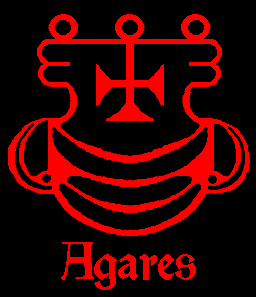
Chaos magic(edit)
A modern personal sigil.
In chaos magic, following Spare, sigils are most commonly created by writing out the intention, then condensing the letters of the statement down to form a sort of monogram. The chaos magician then uses the gnostic state to 'launch' or 'charge' the sigil – essentially bypassing the conscious mind to implant the desire in the unconscious.(8)(6) To quote Ray Sherwin:
The magician acknowledges a desire, he lists the appropriate symbols and arranges them into an easily visualised glyph. Using any of the gnostic techniques he reifies the sigil and then, by force of will, hurls it into his subconscious from where the sigil can begin to work unencumbered by desire.(8)
After charging the sigil, it is considered necessary to repress all memory of it: in the words of Spare, there should be 'a deliberate striving to forget it'.(5)
Grimorium verum sigils. In modern chaos magic, when a complex of thoughts, desires and intentions gains such a level of sophistication that it appears to operate autonomously from the magician's consciousness, as if it were an independent being, then such a complex is referred to as a servitor.(9)(10) When such a being becomes large enough that it exists independently of any one individual, as a form of 'group mind', then it is referred to as an egregore.(11)(12)
Later chaos magicians have expanded on the basic sigilization technique. Grant Morrison coined the term hypersigil to refer to an extended work of art with magical meaning and willpower, created using adapted processes of sigilization. His comic book series The Invisibles was intended as such a hypersigil.(6) Morrison has also argued that modern corporate logos like 'the McDonald's Golden Arches, the Nike swoosh and the Virgin autograph' are a form of viral sigil:
Corporate sigils are super-breeders. They attack unbranded imaginative space. They invade Red Square, they infest the cranky streets of Tibet, they etch themselves into hairstyles. They breed across clothing, turning people into advertising hoardings.. The logo or brand, like any sigil, is a condensation, a compressed, symbolic summoning up of the world of desire which the corporation intends to represent.. Walt Disney died long ago but his sigil, that familiar, cartoonish signature, persists, carrying its own vast weight of meanings, associations, nostalgia and significance.(6)
See also(edit)
Look up sigil in Wiktionary, the free dictionary.
Wikimedia Commons has media related to Sigils.
References(edit)
Footnotes(edit)
^ abWeschcke, Carl Llewellyn & Slate, Joe H. The Llewellyn Complete Book of Psychic Empowerment
^Lemegeton Clavicula Salomonis: The Lesser Key of Solomon, Detailing the Ceremonial Art of Commanding Spirits Both Good and Evil; ed. Joseph H. Peterson; Weiser Books, Maine; 2001. p.xi-xvii
^Greer, John Michael (2003). The New Encyclopedia of The Occult. Llewellyn Worldwide. p. 438. ISBN1-56718-336-0.
^ abcBaker, Phil. Austin Osman Spare
^ abSpare, Austin Osman. The Book of Pleasure
^ abcdMorrison, Grant. Pop Magic!
^P-Orridge, Genesis. Magick Squares and Future Beats
^ abSherwin, Ray. The Book of Results
^Hine, Phil. Prime Chaos
^Marik. Servitors
^Rysen, Fenwick The Fluid Continuum
^Emerson, Gabriel. Egregore Definition Compilation
Sources(edit)
The Book of Pleasure. Austin Osman SpareISBN1-872189-58-X
Liber Null and Psychonaut. Peter CarrollISBN0-87728-639-6
Baker, Phil (2011). Austin Osman Spare: The Life and Legend of London's Lost Artist. Strange Attractor. ISBN9781907222016.
Emerson, Gabriel (1997). 'Egregore Definition Compilation'. Chaos Matrix. Retrieved June 7, 2018.
Hine, Phil (1998). Prime Chaos: Adventures in Chaos Magic. New Falcon Publications. ISBN9781609255299.
Marik (1998). 'Servitors: Part Two of Sigils, Servitors, and Godforms'. Chaos Matrix. Retrieved June 7, 2018.
Morrison, Grant (2003). 'Pop Magic!'. In Metzger, Richard (ed.). Book of Lies: The Disinformation Guide to Magick and the Occult. Red Wheel Weiser. ISBN9780971394278.
P-Orridge, Genesis (2003). 'Magick Squares and Future Beats'. In Metzger, Richard (ed.). Book of Lies: The Disinformation Guide to Magick and the Occult. Red Wheel Weiser. ISBN9780971394278.
Peterson, Joseph H. (ed.), The Lesser Key of Solomon: Lemegeton Clavicula Salomonis (York Beach, ME: Weiser Books, 2001). Considered 'the definitive version'
Rysen, Fenwick (1999). 'The Fluid Continuum --or-- What the f***'s an Egregore?'. Chaos Matrix. Retrieved June 7, 2018.
Sherwin, Ray (1992). The Book of Results. Revelations 23 Press. ISBN9781874171003.
Spare, Austin Osman (2013). The Book of Pleasure: The Psychology of Ecstasy. Lulu Press. ISBN9781105502996.
Weschcke, Carl Llewellyn; Slate, Joe H. (2011). The Llewellyn Complete Book of Psychic Empowerment: A Compendium of Tools & Techniques for Growth & Transformation. Llewellyn Worldwide. ISBN9780738729862.
White, Gordon (2012). 'Magic Secrets as Taught by Robot Fish'. Rune Soup. Retrieved June 7, 2018.
White, Gordon (2010). 'Shoaling: Making Sigil Magic more Awesome Since 2010'. Rune Soup. Retrieved June 7, 2018.
El, Moorpheus (2011). 'Secret of Secrets: Reality is Programmable'. Matrix-Five. Retrieved August 28, 2011.

Retrieved from 'https://en.wikipedia.org/w/index.php?title=Sigil&oldid=1015300196'

2 notes
·
View notes